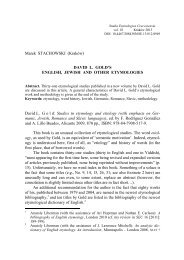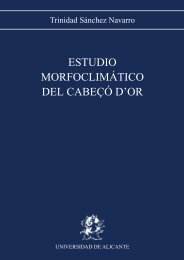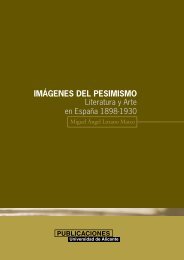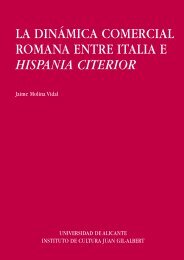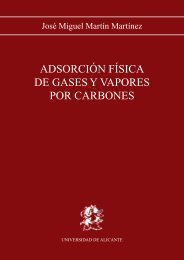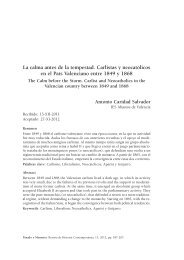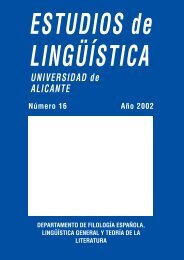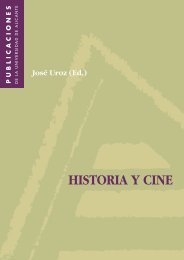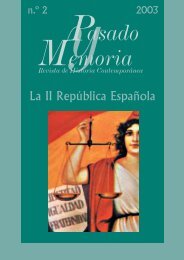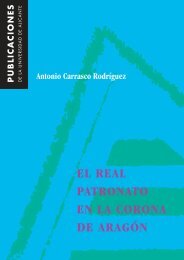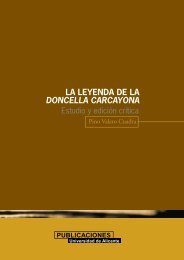English and Galician in the Middle Ages - Publicaciones ...
English and Galician in the Middle Ages - Publicaciones ...
English and Galician in the Middle Ages - Publicaciones ...
Create successful ePaper yourself
Turn your PDF publications into a flip-book with our unique Google optimized e-Paper software.
<strong>English</strong> <strong>and</strong> <strong>Galician</strong> <strong>in</strong> <strong>the</strong> <strong>Middle</strong> <strong>Ages</strong>:<br />
A Sociohistorical Survey<br />
Begoña Crespo García<br />
lords was <strong>the</strong> last step before <strong>the</strong> revolt. A comb<strong>in</strong>ation of<br />
<strong>the</strong>se factors made peasants, townsmen <strong>and</strong>, <strong>in</strong> some cases,<br />
even members of <strong>the</strong> l<strong>and</strong>own<strong>in</strong>g group jo<strong>in</strong> <strong>the</strong> ris<strong>in</strong>g. The<br />
claim<strong>in</strong>gs of this varied group were held by <strong>the</strong> Commons<br />
<strong>in</strong> petitions to Parliament (Thompson, 1983: 30). All this evidence<br />
po<strong>in</strong>ts towards <strong>the</strong> existence of a group at an <strong>in</strong>ter-mediate<br />
level or draw<strong>in</strong>g towards it. (note 6) With parliamentary<br />
representation <strong>the</strong>y had some force to claim <strong>the</strong> rights of <strong>the</strong><br />
economically weak: those who spoke <strong>English</strong>, or, those who,<br />
at least, were of clear native extraction. The revolt was, fi nally,<br />
supressed, but <strong>the</strong> presence of <strong>the</strong> bourgeoisie went on be<strong>in</strong>g<br />
felt everywhere. The fi nal triumph of this middle stratum can<br />
be seen, as far as language is concerned, through <strong>the</strong> literary<br />
revival prompted by men like Chaucer, Gower or Hoccleve.<br />
In 15 th century Galicia <strong>the</strong> second wave of foreign noblemen<br />
led to <strong>the</strong> <strong>in</strong>crease of social tensions <strong>and</strong> confl icts between<br />
<strong>the</strong> different groups. The new aristocrats, supported by <strong>the</strong><br />
k<strong>in</strong>g, tried to exp<strong>and</strong> <strong>the</strong>ir wealth by corrupt means, even by<br />
loot<strong>in</strong>g <strong>and</strong> ravag<strong>in</strong>g. Their ma<strong>in</strong> aim was <strong>the</strong> redistribution of<br />
territories <strong>in</strong> order to ga<strong>in</strong> properties to <strong>the</strong> detriment of <strong>the</strong> ecclesiastical<br />
feuds. The tension culm<strong>in</strong>ated <strong>in</strong> an open confl ict<br />
known as “Guerras Irm<strong>and</strong>iñas”: <strong>in</strong> 1431 <strong>and</strong> between 1467<br />
<strong>and</strong> 1469. Some <strong>Galician</strong>-born noblemen, prelates <strong>and</strong> peas-<br />
CONTENTS<br />
19



